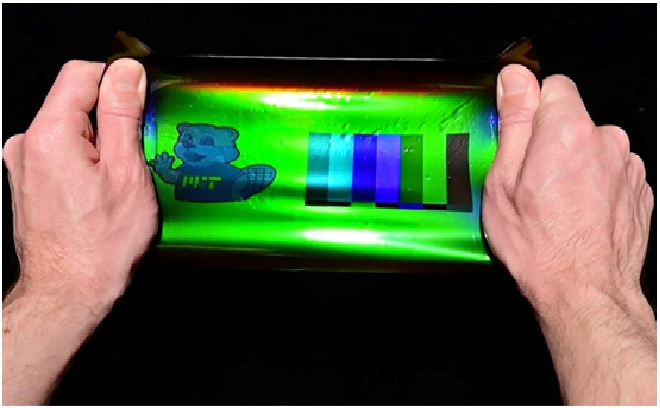Stretchy, Color Changing Films Created Using 19th Century Photography Technique
Engineers at the Massachusetts Institute of Technology (MIT) have developed an exciting new smart material that responds to being stretched or pressured by changing color. It's even possible to encode secret messages on it and it’s all thanks its microscopic structure rather than to chemical additives or dyes.

Figure 1: Stretchy and color changing films.
Figure 1 shows thatGabriel Lippmann invented this technique as a way to create color photography using a mirror and a special emulsion, where an image is imprinted after bouncing off the mirror. Despite being over 130 years old, for certain aspects, it remains unmatched. Lippmann won the Nobel Prize in Physics in 1908 for it. [1]
“Scaling these supplies will not be trivial, as a result of you must management these buildings on the nanoscale,” mentioned Benjamin Miller.
“Now that we’ve cleared this scaling hurdle, we are able to discover questions like: Can we use these materials to make robotic pores and skin that has a human-like sense of contact.”
Researchers first put the pattern on aluminum sheets, which have a floor that resembles a mirror, after which projected photographs onto the pattern. Then they eliminated it and put it on a black silicon backing to assist it keep in place. As the fabric was stretched, the nanoscale buildings modified in a method that made them replicate totally different wavelengths, a few of that are invisible to the human eye. [2]
Intriguingly, by angling the film in relation to the incident light, they were able to project hidden images alongside the colored mirrors. Because of this slant, the nanostructures in the material reflected light with a redshift. Exposed and developed with green light, materials would reflect red; exposed and developed with red light would yield infrared-reflecting structures, which are invisible to the human eye. A red image is revealed when the material is stretched, which was previously invisible.
The method developed by the group is the first of its kind to permit the projection of intricately colored structural materials on a massive scale.“The beauty of this work is the fact that they have developed a simple yet extremely effective way to produce large-area photonic structures,” says Sylvia Vignolini. “This technique could be game-changing for coatings and packaging, and also for wearables.”
The researchers are now looking into potential uses beyond the realm of fashion and textiles, such as color-changing bandages, which can be used to monitor bandage pressure levels when treating conditions like venous ulcers and certain lymphatic disorders. [3]
References:
- https://www.iflscience.com/mit-engineers-use-19th-century-holographic-technique-to-create-color-changing-stretchy-film-64722
- https://iconicverge.com/engineers-use-19th-century-photography-technique-to-create-stretchy-color-changing-films/
- https://www.zmescience.com/science/engineers-use-19th-century-photography-technique-to-create-stretchy-color-changing-films/
Cite this article:
Sri Vasagi K (2022), Stretchy, Color Changing Films Created Using 19th Century Photography Technique, Anatechmaz, pp. 372

